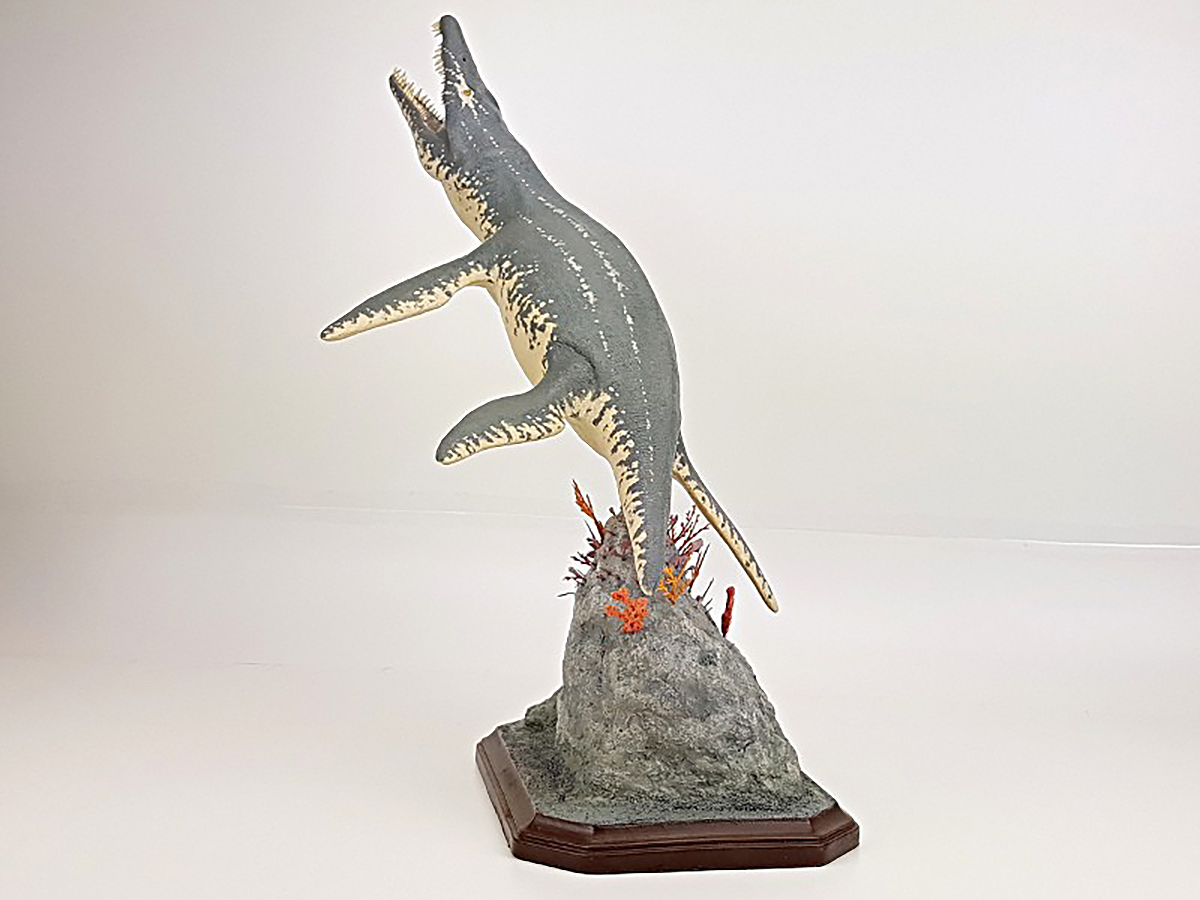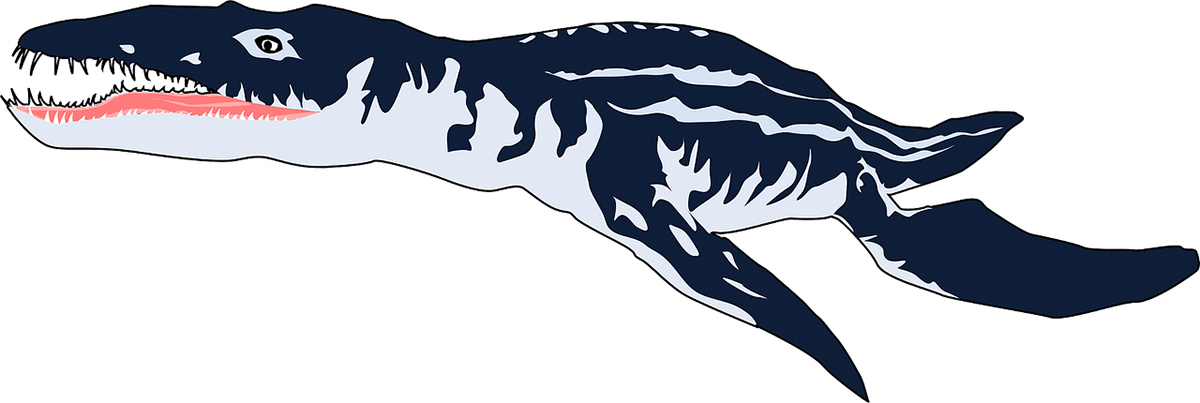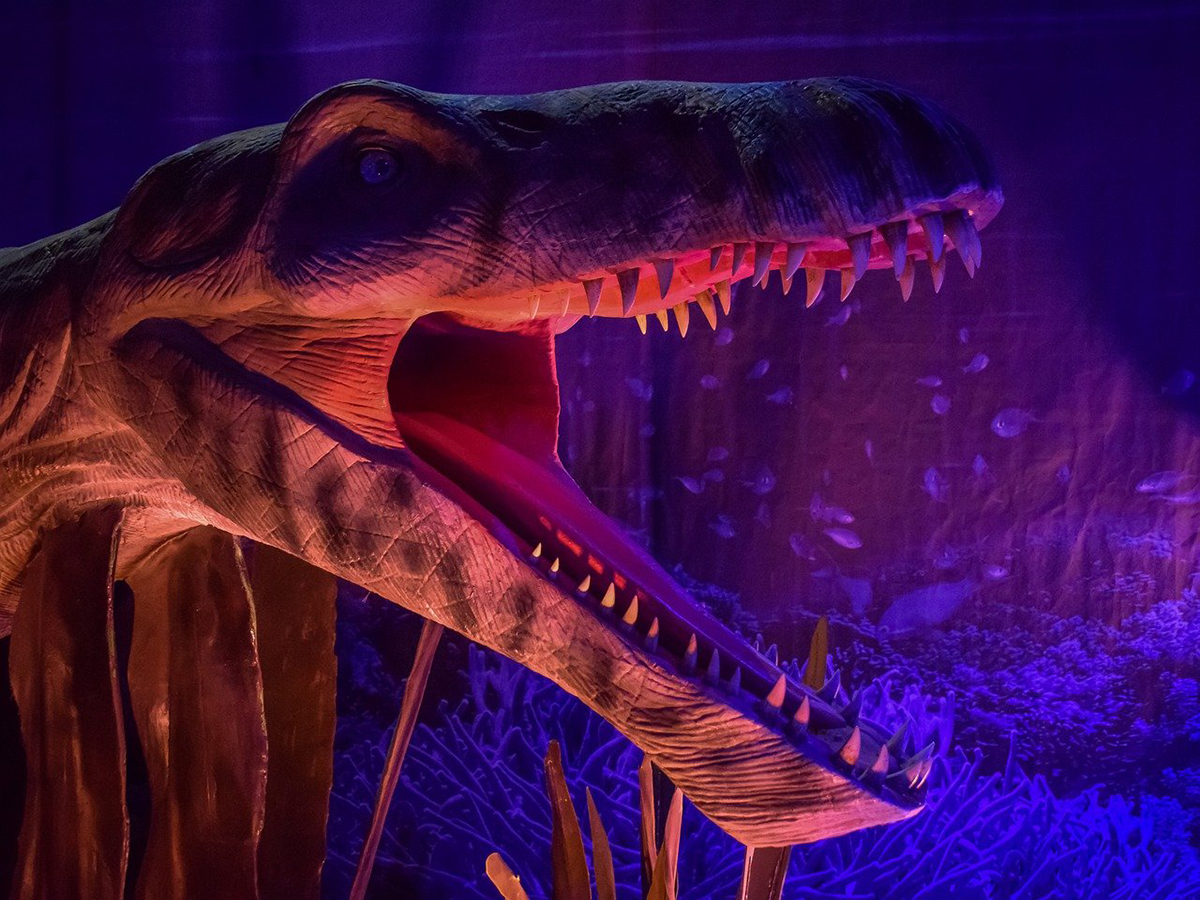
Liopleurodon was one of the marine apex predators that lived in the Middle Jurassic to Late Jurassic period, between 160 and 155 million years ago, in European seas. Be supposed to the largest species of this genus could reach 6,39 meters in length. This aquatic carnivore belonged to the Pliosauroidea, which are a clade of short-necked plesiosaurs. Its name, from Latin, means "smooth-sided teeth."
Within the Liopleurodon genus there are two recognized species: the Liopleurodon ferox, which was the larger of the two, and the Liopleurodon pachydeirus, less common than the first. The remains of this animal were found mainly in France, Germany and England. At present, the most complete skeletons found of this genus belong to the species Liopleurodon ferox.
Discovery of Liopleurodon

In 1873, Henri-Émile Sauvage named this genus Liopleurodon after the discovery of three teeth measuring 70 millimeters. Each of these teeth were found in France and separately, so they had initially been assigned to three different species of Liopleurodon, the only finally valid being that of Liopleurodon ferox.
Remains of an aquatic predator from the late Jurassic period were found in the Volga Beds, Russia. In 1948, Novozhilov named it Liopleurodon rossicus and described it as belonging to the Pliosaur family. However, it is in the genus Strongylokroptaphus.
Description of Liopleurodon
Like other plesiosaurs, Liopleurodon had four strong fins. With them it was propelled in the water, unlike other marine dinosaurs that could do it with the tail, such as the Ichtyhosaurus. A study was carried out with a robot about the swimming method of these reptiles. This one showed that this is not the most efficient way, but it gives very good acceleration. Being a marine ambush predator, this was a highly desirable trait for him. Studies were also carried out on the skull of this powerful aquatic reptile. It is speculated that it had nostrils with which it could find out the origin of certain odors.
Size

To this day, the maximum size of Liopleurodon remains a controversial issue. Paleontologist LB Tarlo believes that the total length of a pliosaur, including Liopleurodon, can be estimated from the length of the skull. According to him, the skull of these aquatic reptiles is equivalent to one seventh of the total body length. The longest skull found of L. ferox has a length of 1,54 meters. According to LB Tarlo's theory, the animal must have measured about 10,5 meters long. However, discoveries made about the Kronosaurus, another genus belonging to the Pliosaurs, cast doubt on the accuracy of LB Tarlo's method.
Further investigation of pliosaur anatomy led to the conclusion that the skulls were only one-fifth the animal's total body length. A well-preserved skeleton of L. ferox is on display at the museum of geology and paleontology at the University of Tübingen in Germany. This specimen has a length of about 4,5 meters. Another adult specimen of this species, from the Oxford Clay Formation near Peterborough in England, has a skull length of 1,26 meters and its total body length is speculated to be 6,39 meters. Therefore, an adult Liopleurodon ferox is speculated to have had a total length of 5–7 metres.
[related url=»https://infoanimales.net/dinosaurs/ichthyosaurus/»]
Fossils indicating a taxon probably more than 15 meters long were found in the Kimmeridge Clay Formation in England. However, this specimen has not been assigned as belonging to the genus Liopleurodon.
There is another incomplete specimen on display at the Oxford University Museum of Natural History in England. The jaw of this has a length of 2,8 meters. Nevertheless, the jaw is supposed to have measured more than 3 meters. Initially this specimen had been assigned to the genus Stretosaurus, as Stretosaurus macromerus. However, today it is considered part of the genus Liopleurodon and was renamed Liopleurodon macromerus. It was later renamed Pliosaurus macromerus. Regarding the genus Stretosaurus, it is currently considered a junior synonym of Liopleurodon.
Liopleurodon curiosities
[related url=»https://infoanimales.net/dinosaurs/plesiosaur/»]
In 1999, the Liopleurodon had an appearance in an episode of the miniseries "Walking with dinosaurs", from the BBC. There it appears as a huge predator with a length of 25 meters. This feature does not correspond to any of the Liopleurodon species. This error may have been influenced by several discoveries of very large Pliosaurs, such as the "Arramberi Monster". It is speculated that this dinosaur had a length of up to 18 meters. Despite having certain similarities with Liopleurodon, the found remains of the "Arramberi Monster" are not enough to attribute it to any genus.